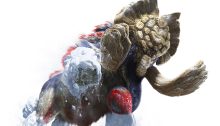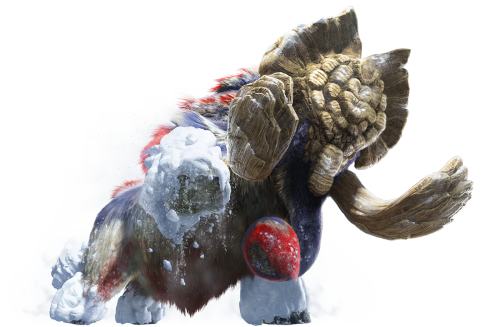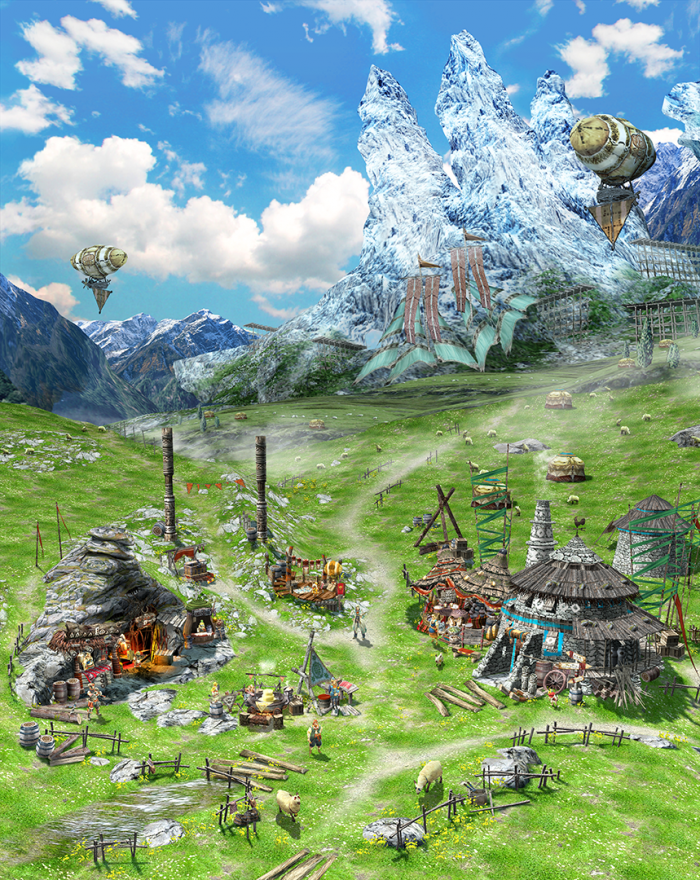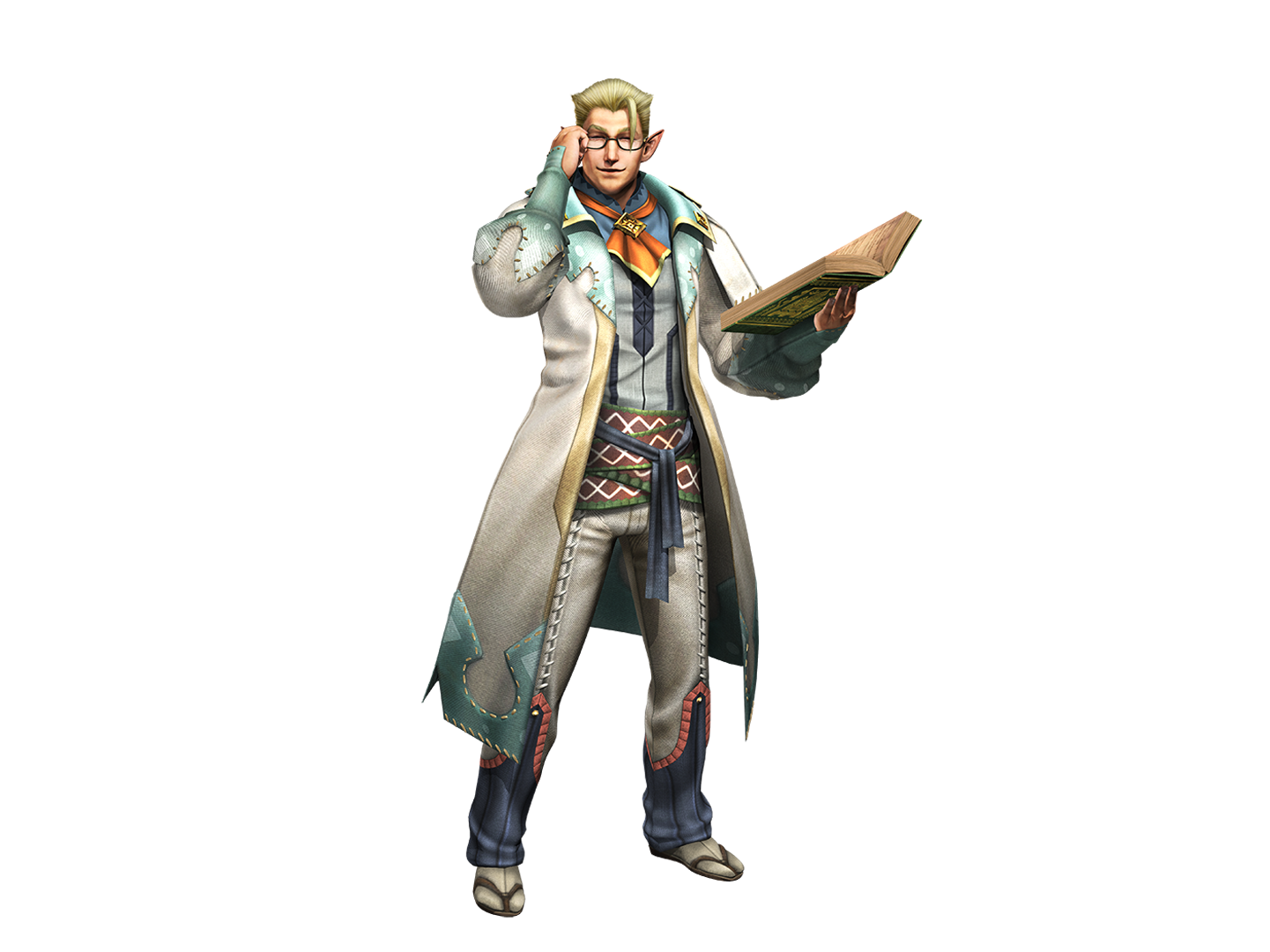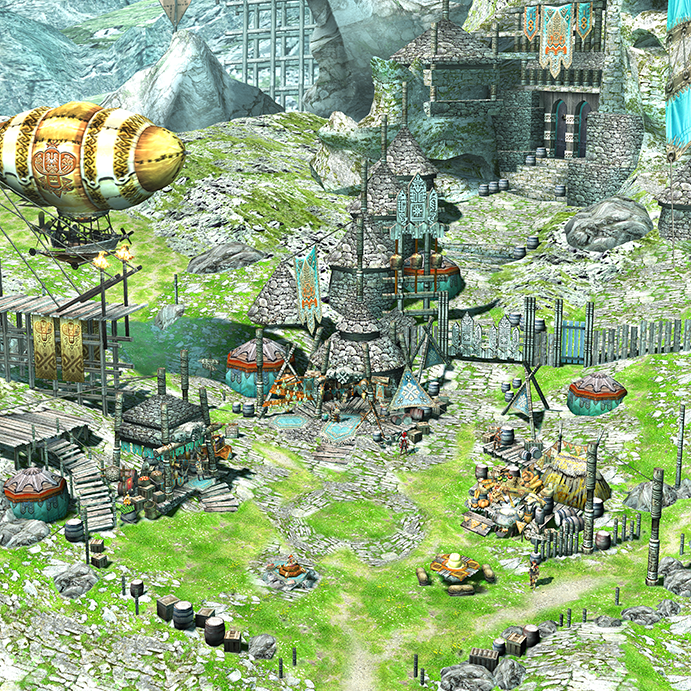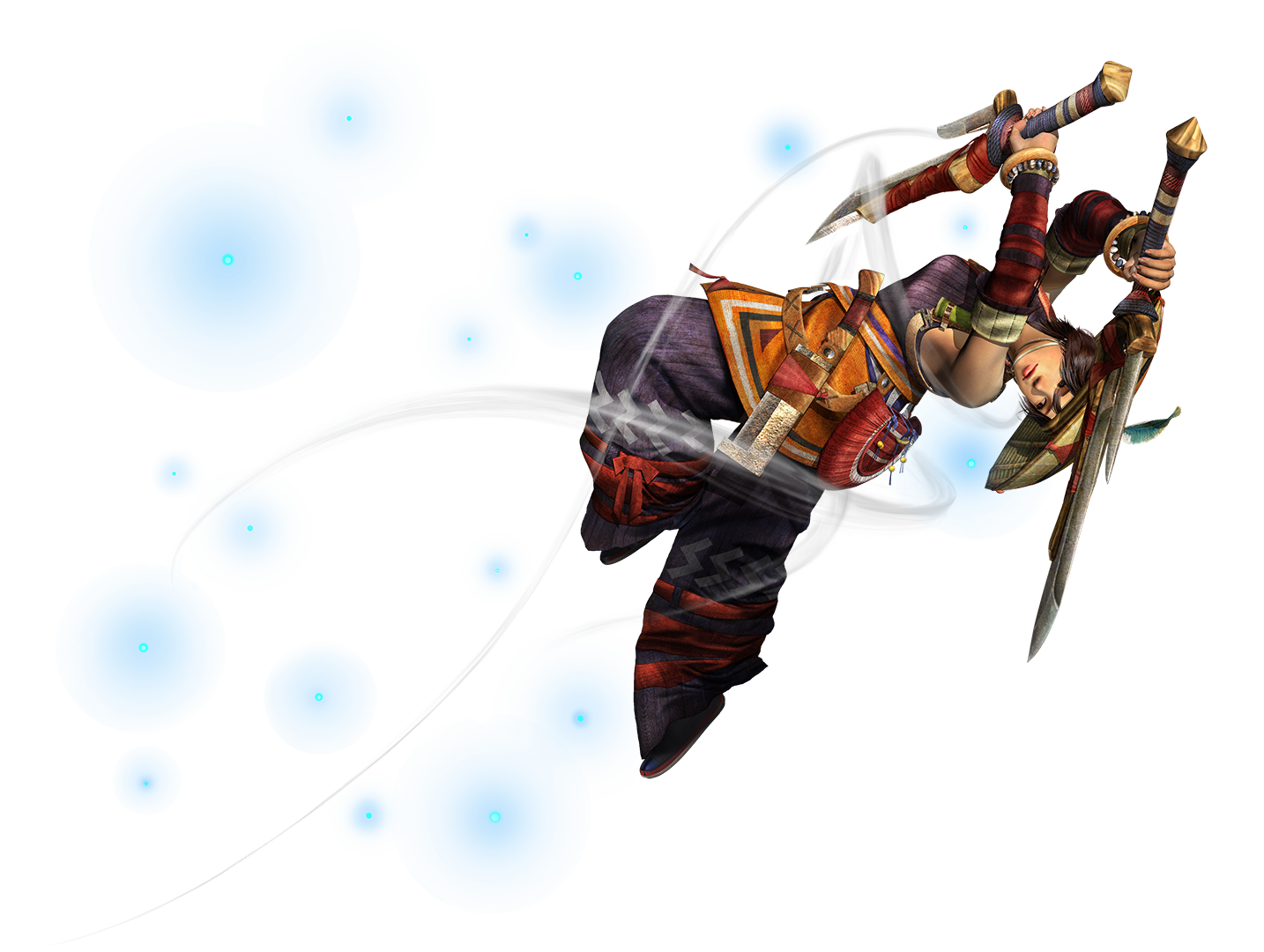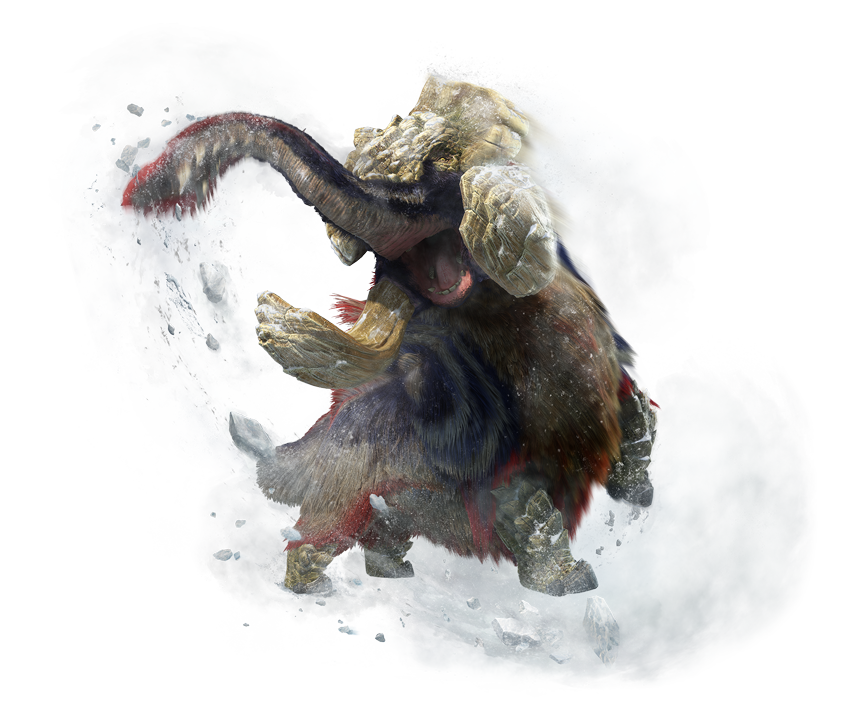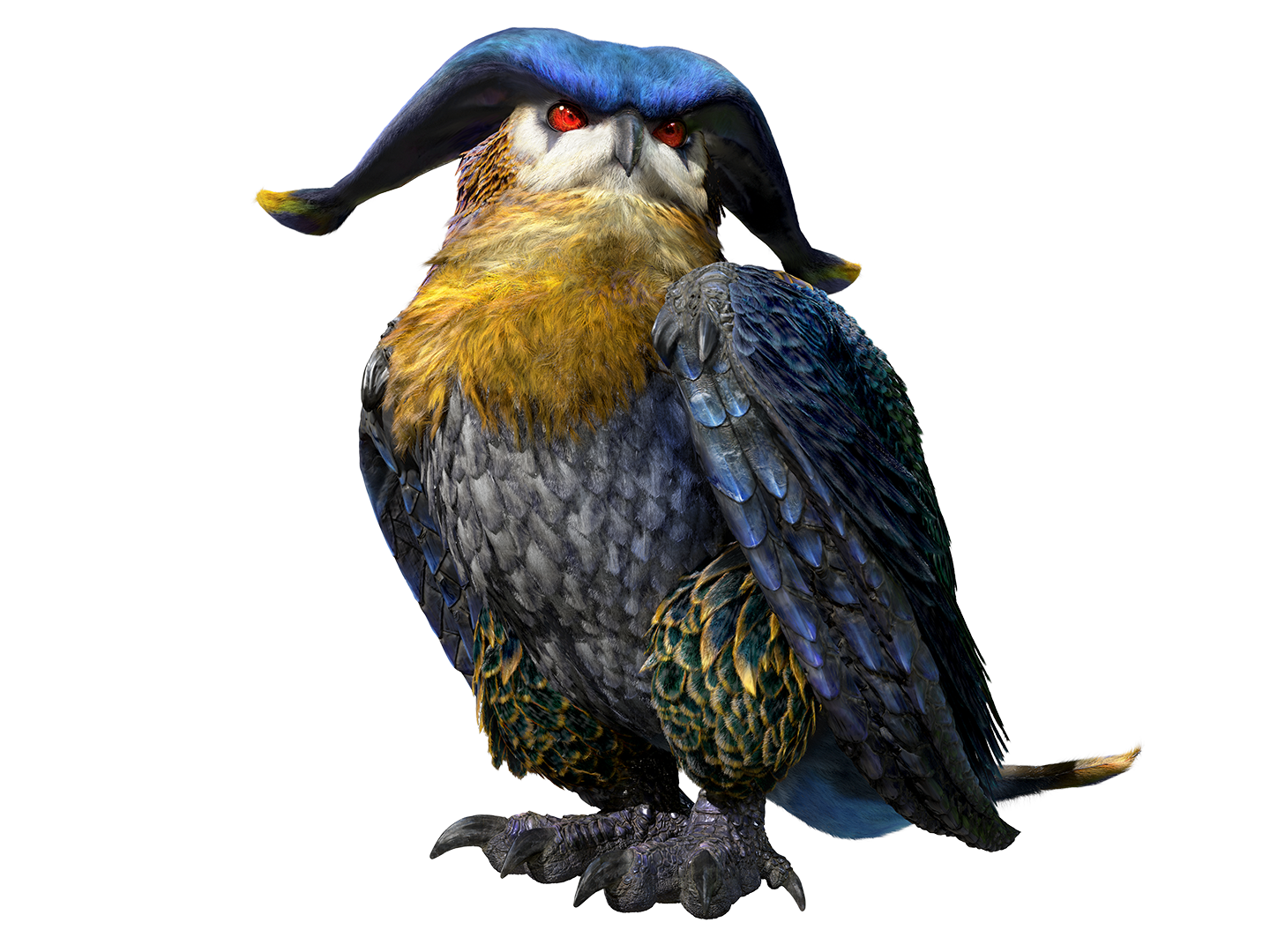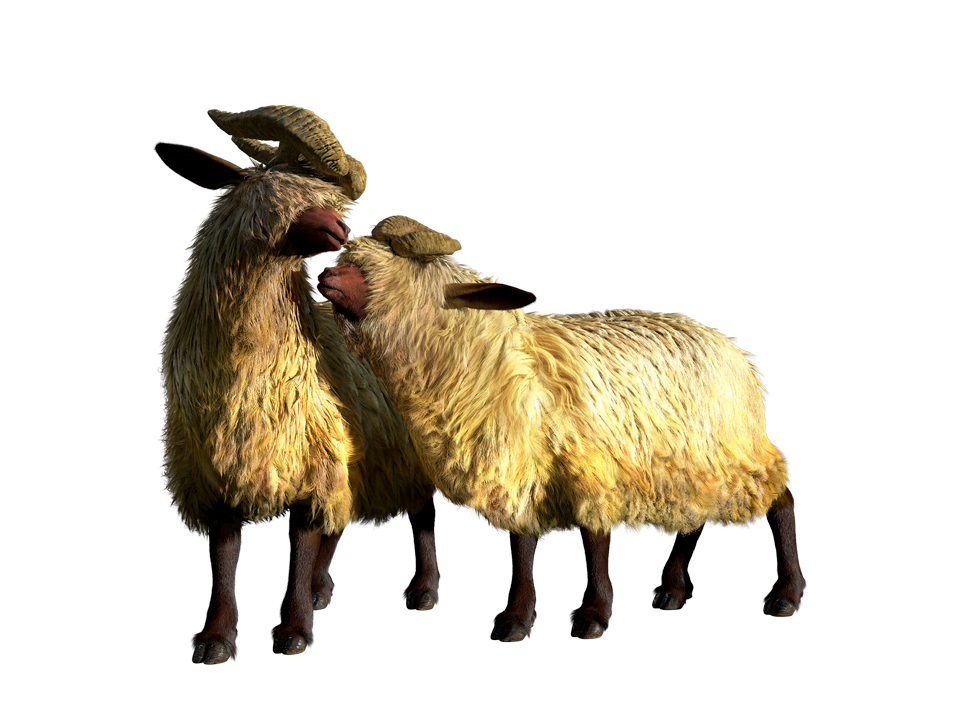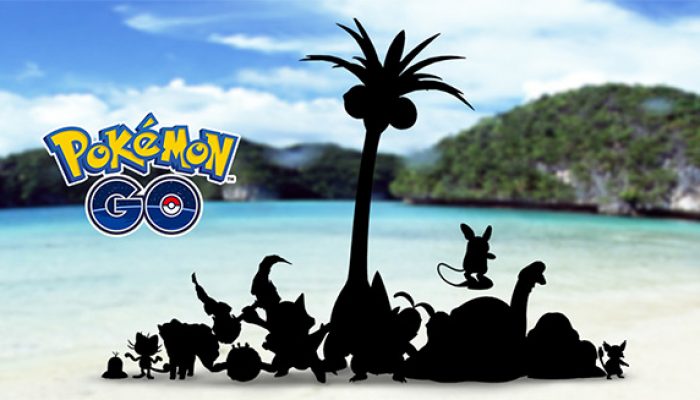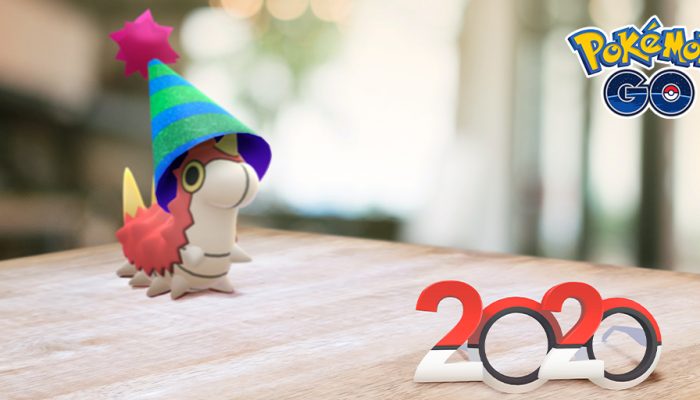 The Adept Style was originally called “Bushido” written in katakana in Japanese.
The Adept Style was originally called “Bushido” written in katakana in Japanese.
☆ NintendObs Weekly – Monday, June 20, 2016 – Sunday, June 26, 2016.
Monster Hunter Generations Localization Notes Part 3 – Gammoth, Malfestio and Moofah
JUN 24
Hello again! This is Marco Bombasi, Localization Director on Monster Hunter Generations. Summer is here, so the game’s release isn’t too far away! Have you started thinking about what weapon/hunting style combination you want to try out first? Let us know in the comments below!
In the meantime, I’m back again to share more of our team’s adventures in localization.
There are a lot of new places and features in the game, so today I’d like to touch upon the names of a few that you’ll be seeing often by giving you some background on how we came up with them. And, of course, we’ll get into more of the monster names towards the end!
Bherna Village
This highland village is the newest location in the Monster Hunter universe, and your starting point in MH Gen. Its design brings to mind alpine villages and pastures in locations such as Switzerland and Tyrol, and the backdrop is quite the sight to see. I can’t wait for you to experience it in-game for yourself!
You can almost smell the fresh mountain air!
When coming up with the international name, we tried romanizing the Japanese name first, ベルナ [be-ru-na], to see how it looked and think about how it would be pronounced. With the lack of proper R and L sounds in Japanese, the katakana character ル can be romanized as either ru or lu, which gave us two options to start with: Beruna and Beluna. But, after we tried saying them aloud, most of us stressed the second syllable (be-RU-na / be-LU-na), which made them sound quite different phonetically. Personally, they reminded me of existing words in English (I had “Aruba, Jamaica, ooh I wanna take you to Beruna, Bahama…” stuck in my head, and “Beluna” made me think of beluga whales). We liked the word stress in the Japanese name (BE-ru-na), so we took out the U to drop the syllable count to two and put stress on the first (BER-na / BEL-na). Considering the Swiss-inspired design of the village, “Berna” was too on the nose, given that the capital of Switzerland is Bern. In fact, Berna is even the actual name of the city in some languages, so we couldn’t have gone with that spelling anyway. But, we preferred the R variation over Belna, so we added a silent H so we could to keep the same pronunciation without the name looking overly similar to that of the real-world location.
The Wycademy
While you’re in Bherna, you’ll hear a lot about something called the Wycademy. Now, I don’t want to say too much (I’ll leave it to the Bherna Chief and Chief Researcher to tell you all about it), but for the purposes of this post, I’ll need to share a little bit to be able to explain how we came up with the name.
The Wycademy is an organization based near Bherna Village that conducts expeditions around the world to survey and research monsters in their natural habitats. It comprises researchers and hunters, both Wyverian and human, though more Wyverians are in key positions since they naturally have longer lifespans (the Chief Researcher himself is Wyverian). Knowing this, we decided to use the Wy- prefix in the localized name. In Monster Hunter 4 Ultimate, we began using this naming convention for certain facilities that are primarily managed by Wyverians, such as the Wyporium and the Wyceum.
But why not just translate the Japanese name into English? Of course, we always consider this first, but it didn’t work out in this case. The organization’s Japanese name, 龍歴院 [ryu-reki-in], would literally translate to something like “dragon history institute,” but we knew any variation of that would end up being excessively long. It would take up too much space in text boxes for item descriptions, NPC dialogue, etc., limiting the space we’d have for other text. Taking the Wy- route would keep it short—to one word, giving us more elbow room to keep the text quality up. Now we just needed to fill in the blank: The Wy-what? Seeing as they are an institution for the advancement of monster research, “academy” seemed to fit well and had a nice ring to it, so we went with that.
The Hunters Hub
Another location you’ll be visiting often in the game is the Hunters Hub. Though this is most likely the first time you’ve seen this term, veterans of the series will be quite familiar with the location—it serves the same function as the Gathering Hall from previous titles. But why change an established game term that has been with the series for so long? Believe me, we didn’t want to! Wherever possible, we try to keep legacy terms consistent when carrying them over from previous titles. The last thing we want to do is confuse long-time fans of the series by changing up names of terms, especially if they’re terms that you’ll come across often in the game. However, we had to make an exception in this case because, well, see for yourself:
As you can see, the Gathering Hall is not exactly a hall in MH Gen. The Japanese term, 集会所 [shuu-kai-jo], remained unchanged since the kanji character 所 can be interpreted as either an indoor or outdoor place. Unfortunately for us, “hall” has a more definitive meaning. So, rather than carrying over the term from previous titles for the sake of consistency, we opted to change it so it would work in the context of this game.
At first, we thought of calling it “Gathering Camp,” but were afraid it would get confusing since there are already “base camps” for hunters when they’re out on quests. We preferred to keep the second word to four letters or less, so it would be no longer than the legacy term and we could avoid potential character limit issues. After trying a few other words on for size, “hub” felt like a good fit, and someone suggested replacing “gathering” with “hunters” to throw in a bit of alliteration. We ended up with a term that was shorter than the original legacy term by three characters and could be abbreviated without being confused with other existing game terms (lifesaving when dealing with strict character limits), so in the end “Hunters Hub” worked out both logistically and contextually for us.
Hunting in Style
One of the new gameplay features you’ll get to experience in MH Gen is being able to hunt while utilizing one of four unique Hunting Styles: Guild, Aerial, Striker, and Adept. Yuri’s already written a post introducing these in case you want to learn more about how each of them work. In this post, I’ll just focus on the naming of each style.
Localizing Guild, Aerial, and Striker was a piece of cake because even when translated literally, the names still summed up what each style has to offer:
ギルド [gi-ru-do]:Guild – conventional method of hunting
エリアル [e-ri-a-ru]:Aerial – very acrobatic in nature
ストライカー [su-to-ra-i-kaa]:Striker – focused on utilizing powerful Hunter Arts
The name for Adept Style took us a little longer to settle on. The Japanese name, ブシドー [bu-shi-doo], originates from the concept of 武士道 (pronounced the same), which is the code of moral principles that the samurai lived by. To put it simply: Bushido is to samurai as chivalry is to knights. A few of the principles observed in this code were courage, self-control, and martial arts mastery, so the name was befitting for a style that requires such technical and precisely-timed attacks.
There was only one problem: Bushido is a very Japanese concept, and while it works well in the Japanese version of the game, from a global standpoint we were afraid that some people wouldn’t be familiar with the term or the values behind it. Early on, we went with “Shadow Style” for a while, but once we got a chance to actually try it out in-game, we felt “shadow” was too ninja-like and didn’t really encompass what the style was all about. We went back to the drawing board and eventually arrived at Adept, which allowed us to keep the intention of the original name while making it easier to grasp for those not familiar with Japanese culture.
Gammoth
The second of The Fated Four I’d like to talk about is Gammoth, a mountain of a beast that you’ll find in frigid regions such as the Arctic Ridge and the Frozen Seaway. It’s the most gentle-looking of the new flagship monsters, but don’t let that fool you—it won’t hesitate to crush anything it deems a threat! It can dish out powerful smashes and wide sweeping attacks with its large trunk, and even suck the air to pull in enemies into its attack range. Oh, and did I mention its trunk has FANGS on it? Because it does. And it’s not just its attacks you have to worry about. Gammoth can cover its legs in snow, which acts as a thick coat of protective armor. It can then flip this defense into offense by stomping its feet with enough force to scatter the snow in all directions, inflicting nearby hunters with Snowman status.
It’s an indomitable force to be reckoned with, and we wanted to make sure we captured that in the international name. Fortunately, naming Gammoth turned out to be a lot simpler than we had thought. The original name, ガムート [ga-muu-to], is derived from the name of the Hindu deity, Ganesha, and the genus name for mastodon, “mammut.” We kept that overall theme since it suited the monster’s almighty appearance, but replaced mammut with mammoth to give the name an even more colossal feel to it.
Malfestio
When you’re deep within the Jurassic Frontier, keep an eye out for this bird of prey. Malfestio isn’t one of the flagship monsters in MH Gen, but it’s a fearsome monster all the same. It has special attacks that can inflict Sleep and Confusion, leaving hunters vulnerable as it swoops in to attack. Hunters who aren’t careful will find themselves waking up back at base camp wondering if it was all a bad dream.
For the localized name, we decided on something quite different from the Japanese. In Japan, this monster is called ホロロホルル [ho-ro-ro-ho-ru-ru] (say that ten times fast!), which is derived from the Japanese onomatopoeia for owl sounds, the word “chloroform,” and Koropokkuru—a race of small people in Ainu folklore. As much as we liked the meaning behind this, it was just too long to romanize for the international version (not to mention it’s a bit of a tongue-twister). We always try to avoid making names too long—it could spell disaster when translating material names and such. Plus, there’s always the possibility a subspecies could show up in future installments, so we like to think ahead and leave a little space to work with just in case we happen to need it later.
With romanization out of the question, we came up with other ideas based on the monster’s characteristics. A few of our proposals included Sonotus, Strikkua, and Notrios, which were all derived from words like “sleep” and “sorcery” in different languages, as well as various scientific owl names. In the end, our top pick was a mix of the words maleficus (Latin for wicked), jester, and asio (a genus of owls). We felt “wicked” was a good word to describe the monster’s spellbinding capabilities, and visually, it sort of looks like an owl wearing the cap ‘n bells of a jester, so we thought this name fit the monster quite nicely.
Moofah
Lastly, Moofahs are small, sheep-like herbivores that you’ll find on the Deserted Island. In fact, you’ll find a couple of them wandering around Bherna Village as well, including a baby Moofah named Moofy! The localized name is basically a romanization of the Japanese, ムーファ [muu-fa], which comes from the words “mutton” and “fur”. It had a fluffy sound to it that went well with the overall appearance of the herbivore, so we didn’t see any reason to change it.
That’s all I got for this round. Thanks so much for reading! I hope you found this informative. Next week, we’ll talk about more good stuff and go into detail about localizing the all-new Deviant Monsters!
— Marco at Capcom
Source: Capcom Unity.
At NintendObserver, the comments are on Discord.
Click on Community to learn more. 🙂
…
…Wanna play? Buy a 3DS.
And if you’ve already got yours, click on Monster Hunter Generations for everything you need to know about the game. 😀
